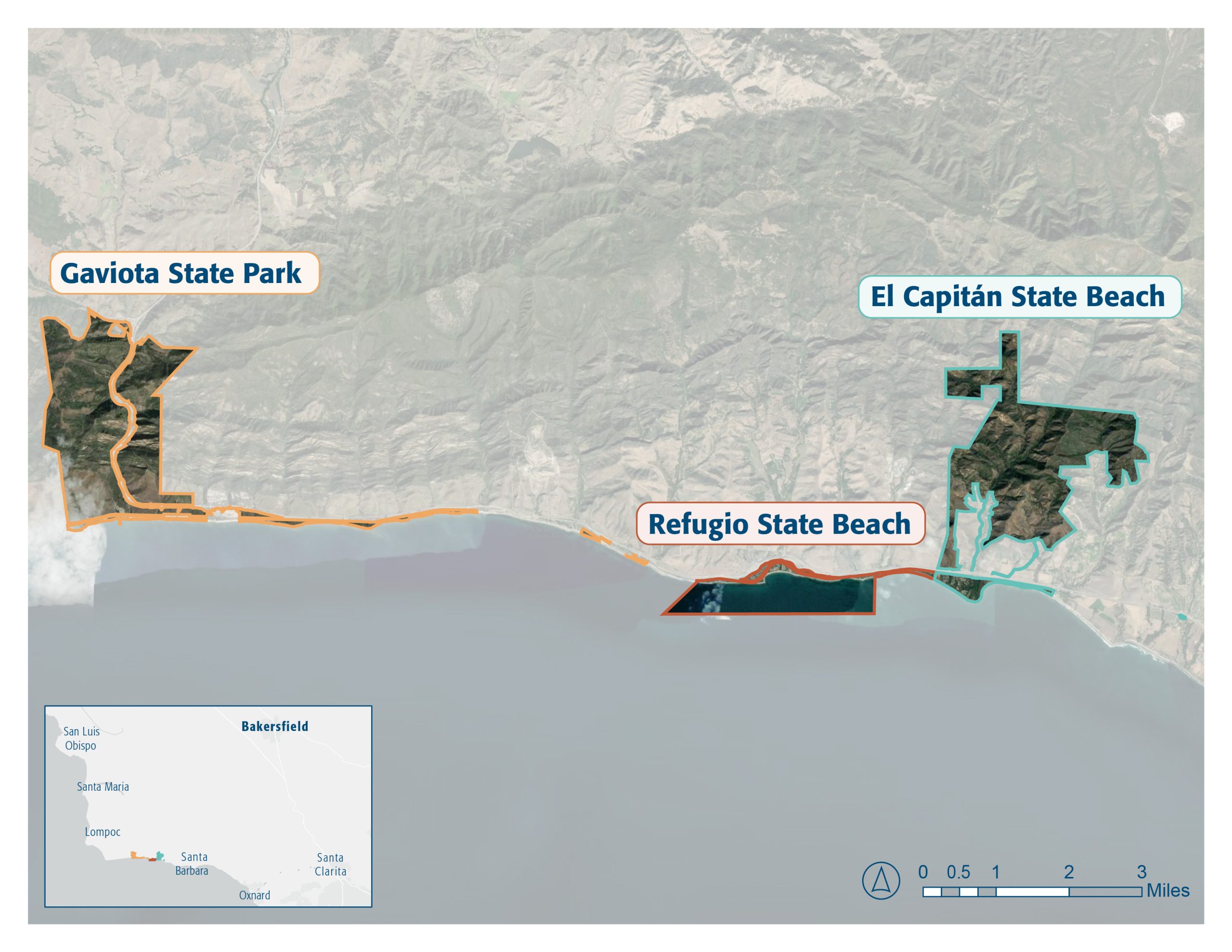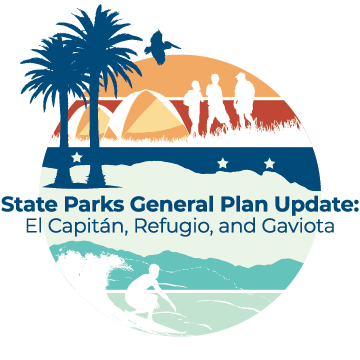
This General Plan Update will prepare Gaviota State Park (SP), Refugio State Beach (SB), and El Capitán State Beach (SB) for the future. Informed by community input, the plan will include recommendations for protecting significant resources, modernizing park infrastructure, adapting to climate change impacts, and providing sustainable recreational opportunities for all visitors. Together these recommendations will help California State Parks adapt, renew, and preserve these parks for visitors to enjoy far into the future.
Project Location
El Capitán SB, Refugio SB, and Gaviota SP are all located off U.S. Highway 101 in Santa Barbara County, approximately 20-30 miles north of the city of Santa Barbara. They provide unique recreational experiences to visitors from across the state, as well as residents of nearby cities and towns like Lompoc and Santa Ynez. These three parks provide coastal access, developed day use, and overnight camping facilities and are rich in recreational opportunities, and natural, cultural, and tribal resources.

About this Project
In 1979, General Plans were adopted for Gaviota SP, Refugio SB, and El Capitán SB. These original plans included a thorough inventory of wildlife, historic, and archeological assets, and the parks’ natural features and facilities. They also outlined park-wide and area-specific issues and made recommendations to address these concerns.
All three parks have experienced many changes since the original General Plans were adopted, and the guidance provided in the 1979 plans is now outdated. Ongoing damage from severe winter storms, impending sea-level-rise and other climate change impacts, aging infrastructure, significant acquisition of new property, high-recreation demand, and the need to protect natural, cultural, and recreational resources all contribute to the need for updated plans that reflect the current realities at El Capitán SB, Refugio SB, and Gaviota SP.
This effort aims to prepare the parks for the next thirty years, by developing plans and strategies that meet state-wide sustainability goals, improve park resilience, protect park resources, and ensure visitor safety and enjoyment for generations to come.
